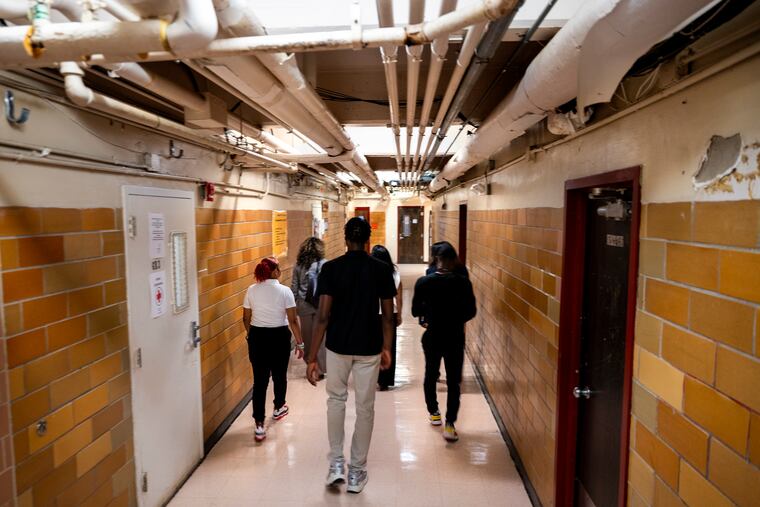The number of students experiencing homelessness in Camden and nationwide may be undercounted
A result is that many students may be missing out on additional support from school districts.

The number of schoolchildren experiencing homelessness in Camden — as well as nationwide — may be undercounted, according to a recent study.
As a result, many students may be missing out on additional support from school districts, the study concluded.
Out of about 7,500 total students in the Camden City School District in the 2018-19 school year, the number experiencing homelessness was thought to be roughly 338, or 4.5%, according to the study. But the real number was estimated to range from about 450 students to perhaps 1,500 more than that, calculations in the study show.
Appearing in the journal Educational Researcher last month, the study was a collaboration among the Camden City School District, the nonprofit Camden Coalition, and Nemours Children’s Health, a pediatric health system with home bases in Wilmington and Jacksonville, Fla.
Researchers said homelessness occurs when a student lacks a fixed, regular and adequate nighttime residence.
This includes sharing the housing of other people due to loss of housing, economic hardship, or a similar reason; living in motels, hotels, trailer parks, or camping grounds due to the lack of alternative adequate accommodations; living in emergency or transitional shelters; living in cars, parks, public spaces, bus or train stations, or similar settings; and living in abandoned buildings or substandard housing.
For the study, researchers analyzed existing Camden schools data, while consulting other databases maintained by the Camden Coalition, according to J.J. Cutuli, a senior research scientist at Nemours who was interviewed on Saturday from his home in Lower Merion. The coalition works to improve care for people with complex health and social needs.
To ascertain which students are homeless, Camden, like all school districts, sends forms home with kids that ask parents or guardians about their housing situation.
Also, teachers and staff will report to the district whenever they learn that one of their students is experiencing homelessness.
But these methods don’t necessarily identify all students who are unhoused, researchers discovered.
Suggesting other ways to mine existing school data, the study shows, for example, that analyzing student addresses might reveal that a family is living at a motel, or a shelter. “We would then talk to the families to learn their housing situation,” Cutuli said. These conversations would yield more detailed information about homelessness, he added.
Researchers used the district’s data in new ways, linking it across different social service programs, Cutuli said.
This wide range underscores the inherent difficulty of identifying and serving students experiencing homelessness, as well as the large scale of the problem.
“Schools play a vital role supporting students and their families,” said Ebony Maddox, homeless-education liaison for Camden City Schools. “But many families do not know that supports are available and school staff often do not know when families are experiencing homelessness. We need more tools to help us reach students so that homelessness does not get in the way of education.”
Cutuli said the Camden research shows homelessness patterns that probably exist elsewhere. There are an estimated 1.2 million school children experiencing homelessness nationwide.
“While more research is necessary,” he said, “there’s a good possibility that many other school districts have considerably under-identified the number of children who meet the federal definition of homelessness.
“These findings hold the potential to reach hundreds more students experiencing homelessness in Camden alone and, if this research were applied more broadly, could find a large number of children are not receiving the support they need.”